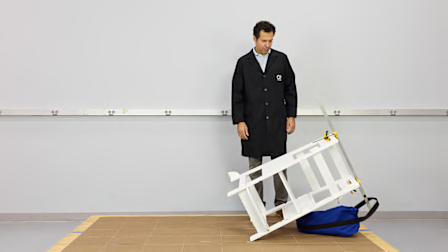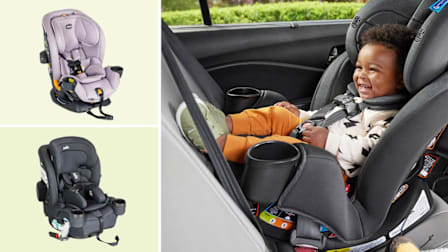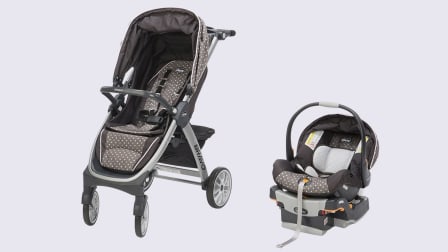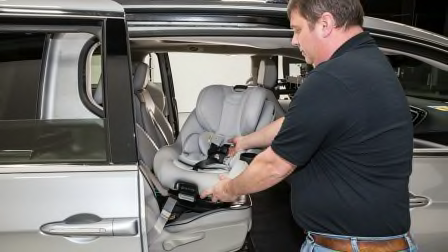Baby Bath Safety: What Parents Should Know
The bathtub safety rules experts recommend, plus how (and how often) to bathe your baby
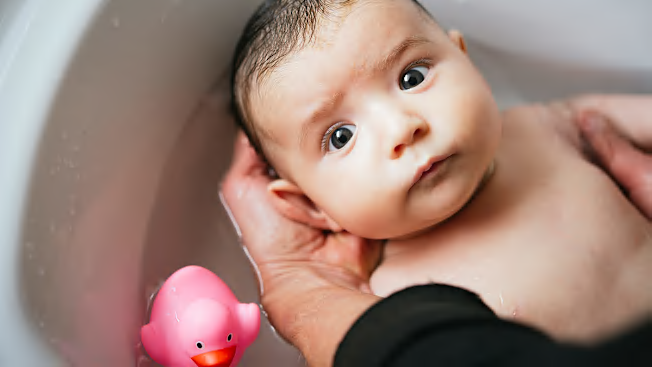
When I was pregnant, I imagined that bathing my twins would be a relaxing daily ritual. Instead, it involved two wailing babies, an anxious partner, and countless potential hazards requiring my constant vigilance. Now that my girls are past the newborn phase, things have calmed down a bit. There’s much less crying and a lot more splashing, but the potential dangers of bathtime are never far from my mind.
Rule #1: Never Leave Your Child Unattended in the Bath
Drowning can be silent, and it can happen in minutes. It may not feel like you’re leaving your child “unattended,” but stepping out of the room or turning your back for even a moment can be dangerous during bathtime. Practice “touch supervision” by always keeping a hand on your baby in the bath. That way, you won’t be tempted to multitask.
“Make sure you have everything you need for the bath within reach before the bath starts,” says Nancy Cowles, product safety advocate and former executive director of the nonprofit Kids in Danger. “And if you need to get something during the bath, take the baby with you.”
Best Baby Bathtubs, According to Our Tests
We tested 12 tubs with five babies and four baby product experts to find the safest and best baby bathtubs.
Rule #2: Don’t Leave Older Siblings in Charge
Never ask an older sibling to watch the baby while you step out of the bathroom.
“It’s too much responsibility,” says Cowles. “And kids may not be able to judge that their sibling is in danger. They may not understand what is happening.”
Rule #3: Cap Your Water Heater at 120° F
Prevent scalding by setting your water heater so that it never goes above 120° F.
Babies aren’t tiny adults, Kwaji says, noting that they have thinner, more sensitive skin and don’t regulate temperature as well as adults. Bath temperatures should be around 95° F to 100° F.
Never bathe your baby in running water, as the temperature could fluctuate when the tap is on. Many baby bathtubs come with a temperature gauge, but Cowles cautions against relying on them.
“A gauge can be broken,” Cowles says. “Dip your elbow in the water—if it’s too hot for the skin of your inner arm, it’s too hot for baby.”
Rule #4: Slip-Proof Your Bathroom
Drowning isn’t the only way a child can be injured in the bath. Falls on hard, slippery surfaces account for many of the injuries that Kwaji sees as an urgent care practitioner.
Most modern bathtubs are finished with a slip-resistant surface, but that may wear down over time, according to Cowles. If your baby bath tub uses suction cups to hold the tub in place, check that they adhere to your bathtub. Once you start to use the adult tub to bathe your toddler, add a slip-resistant mat or decals. Ensure your bathroom is well-lit and furnish it with anti-slip bath mats.
It’s also a good idea to enforce some bath time safety rules to prevent slips, such as no standing in the tub.
Rule #5: Use Age-Appropriate Baby Bath Products
Baby bathtubs can make bathtime easier for you and safer for your child, but it’s important to choose age-appropriate products for your baby.
“If your baby cannot sit independently, do not buy a seat,” says Kwaji. She also cautions against bathtubs with collapsible or foldable elements that could pinch or trap babies.
It’s also a good idea to avoid infant bath seats.
“These seats often give parents a false sense of security,” says Cowles. “They can tip and pull a child underwater.”
How to Make Bathtime the Best Time
Bathtime is a multipurpose event. First and foremost, it’s about getting baby clean, but it can also be a tool to wind your baby down for the night, introduce them to new sensory experiences, and facilitate bonding between your little one and their caregiver.
You May Not Need to Bathe Your Baby Every Day (Unless You Want To!)
“Bathing is cultural,” says Kwaji. “In some cultures, it’s important to bathe children daily, but in others you don’t.”
Kwaji suggests parents sponge-bathe their baby until the umbilical cord falls off. After that, you may want to offer baths two to three times a week, and if you choose to bathe baby daily, you don’t necessarily need to use soap every time, says Kwaji.
“From a biological standpoint, your baby’s skin is inherently clean,“ Kwaji says. “Babies are born with one type of sweat gland that makes a watery substance—so no oils or bacteria-causing body odor. That comes with puberty. Babies need baths because food or milk is stuck somewhere, or they had a blowout.”
Fill the Tub to a Safe and Comfortable Depth
“I recommend filling the tub so that the water is lower than the waist on baby, if baby is sitting or reclining,” says Kwaji. “That’s deeper than two or three inches of water, but still far enough away from your baby’s face.”
As your child grows, you may want to increase the depth of the water based on their preferences.
To keep baby warm during the bath, Kwaji recommends wetting a washcloth and placing it on the baby’s stomach with the edge dipped in the water.
Wash Baby in All the Right Places
“Healthy babies have lots of chunky folds,” says Kwaji. “Pay attention to the folds.” That’s where food, milk, and fecal matter can get trapped and, if neglected, could lead to bacterial or fungal infections.
Use a dye-free and scent-free soap formulated for babies. In addition to cleaning skin folds at the neck and thighs, it’s also important to wash baby’s genitals. If baby boy is uncircumcised, be sure to roll back the foreskin to clean that area thoroughly, says Kwaji.
Many baby soaps are combo washes, meaning you can use them as body wash and shampoo.
Best Baby Shampoos
We evaluated 22 baby shampoos to find the safest for baby and the planet.
“Unless your baby has cradle cap, you don’t need to wash their hair every day,” Kwaji emphasizes. As your child grows, the frequency of hair washing will depend on hair texture. Curlier hair requires less washing, while finer hair may need to be washed more often.
Have Some Fun
“Bathtime is a wonderful sensory learning opportunity,” says Kwaji. She recommends getting a few age-appropriate bath toys, such as waterproof bath books, to help keep an active baby entertained during the bath under caregiver supervision. “I also recommend a kneeling mat for your comfort.”
There isn’t a hard and fast rule for how long a bath should be, according to Kwaji. Still, it’s best to get baby out of the water before their skin begins to prune.
And though they may be tempting, Kwaji counsels parents to skip the bath bombs. “The bright dye isn’t great for kids’ skin. And those added oils, with sparkles and colors, put little girls at risk of urinary tract infections.” Yikes!

















